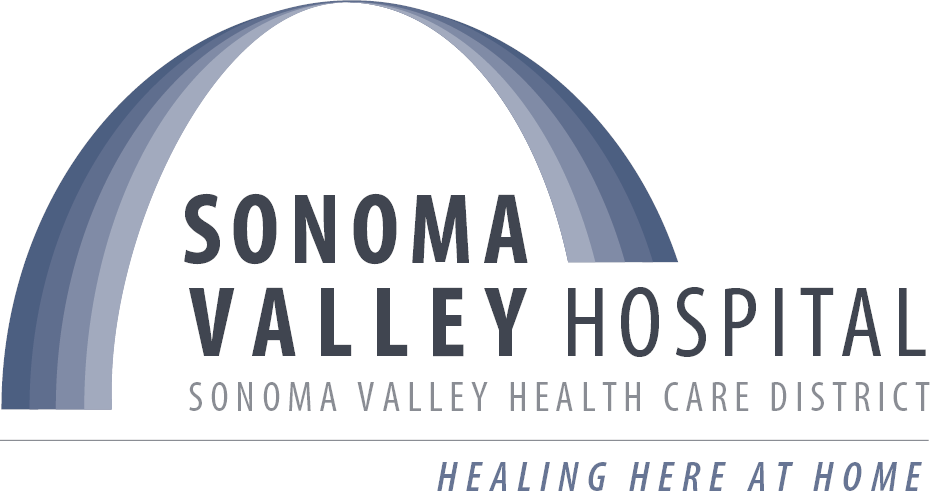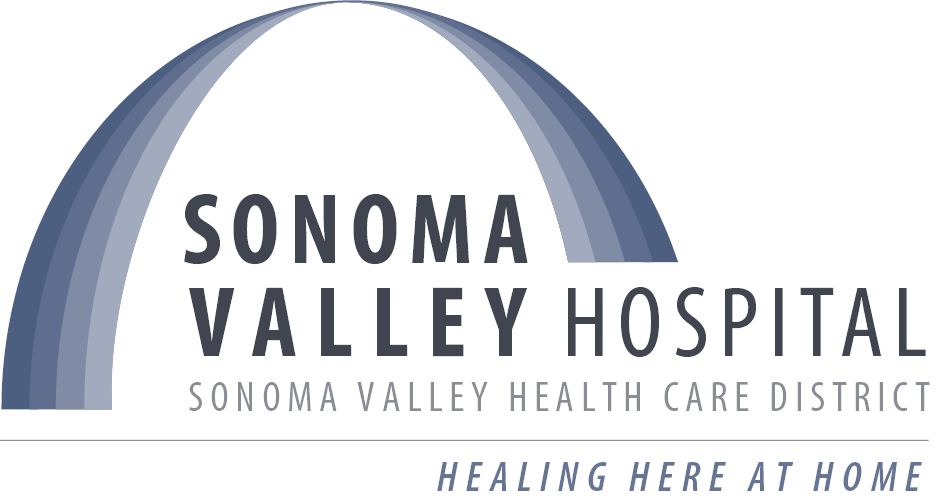Guest Blog: “Continuing The Conversation” Jane Hirsch, Sonoma Valley Health Care District Board Chair.
June 15, 2017I know I speak for the board and hospital administration when I say we’re extremely grateful to our community for passing the parcel tax, to the volunteer committee which ran such a strong campaign and the donors who supported it. We have a great hospital and your support helps keep it that way.
It has become clear in recent months that the community has questions about hospital operations, and I’d like to begin addressing them in the spirit of continuing the conversation sparked by the vote.
An observation I have from the campaign is that just about everyone agrees we have an excellent hospital. Patients frequently comment as to the high level of care and the caring manner in which they are treated by staff. This is reinforced by patient satisfaction surveys, and by the recent ranking from Medicare identifying SVH as one of the few hospitals in our region to be awarded four stars.
The Marketplace Sets Salaries
The secret to providing great care is no secret, really, you need to hire and retain outstanding staff. To do that, we need to pay a competitive market rate.
All hospital salaries, including administration, are set by the marketplace. In order to recruit and retain high caliber staff, the hospital increased salaries and benefits over several years to bring them closer to that offered at other hospitals. This was accomplished by analyzing the ranges for each position at comparable hospitals in the region and identifying the mid-range, which is where we go when determining salaries.
What is a competitive market rate? Let’s look at nurse compensation as an example. A nurse in the North Bay with five years’ experience commands around $60 an hour, or around $120,000 a year. If we don’t pay a competitive salary, nurses will go elsewhere. On top of that, we can’t pay less to the directors who supervise staff, and are often nurses themselves, or no one would take the job as it requires greater responsibilities, so those in director-level positions are paid more than their staff. As I said, the marketplace sets salaries.
Business Development Role
The Chief Revenue Officer role has been singled out in discussions about hospital salaries, and the same reasoning applies here. This role, also known as “Business Development” at other organizations, has an expectation to bring in or save SVH at least $1 million in revenue annually. In the first 11 months of FY 17 (which ends June 30), her efforts directly generated insurance reimbursements to the hospital of $3 million, an increase of $1.87 million over the entire previous fiscal year. She brought in nearly 10 times her salary for SVH.
Our Chief Revenue Officer is unusually qualified and would be very difficult to replace. She has worked and lived in Sonoma for many years, has impressive professional credentials, and at one time ran our Surgery Department so she has great relations with our medical staff. She also was a member of the team that designed the operating suite.The hospital so benefitted from her work that we continued her employment when her husband was transferred two years ago. Working remotely is common in today’s workforce and does not mean an individual works less – she in fact works over 50 hours a week. When she travels to Sonoma each month, she also pays her own expenses.
Her recruitment efforts are an important reason why SVH has seen an increase in the past two years in physicians and surgeons practicing here, and a significant increase in the revenue they generate for the hospital.
Hospital Structure and Titles
It was noted that SVH has an unusually high number of “chief” and “director” positions compared with other hospitals. The fact is, almost every acute care hospital of our size has a similar leadership structure. In addition, SVH is a very flat organization, whereas most hospitals have more layers of leadership.
Because of our smaller size, our leaders usually do the job of at least two people. For example, our Chief Nursing Officer serves as the “House Supervisor” for four hours per day and is on call for scheduling of all nursing staff 24/7. This experienced nurse executive does this, even though it is highly unusual, because it keeps our costs down.
Some hospitals do reserve the title of “chief” for fewer positions but, if you go deeper into those organizations you find that the “chiefs” have more management layers reporting to them and make more than their counterparts at SVH.
Operating Efficiency And Growth
As a board member and a former Chief Nurse Executive at UCSF, I can assure you that administration runs a highly efficient hospital. SVH administration under Kelly Mather maintains a constant focus on reducing costs and maintaining low administrative overhead. Recently, for example, administration reduced the Full Time Employee status of several executives, shifting them to reduced time schedules, and eliminated one senior position.
I also should point out that all hospital expenses, including executive business expenses, are audited annually by an outside firm and have been found in compliance with hospital policies and regulations.
At a time when many small hospitals are closing, SVH administration under Kelly Mather has managed to improve quality of care, broaden services and upgrade and expand the facility while moving steadily toward greater financial stability. And despite what some have claimed, the hospital is making great strides in increasing revenue. Let’s examine the facts:
- SVH has seen revenues increase by nearly 20% since 2014 – from $50.5 million to $60 million currently.
- The hospital has recently brought in around 20 new physicians, many of whom are surgeon specialists, and expanded the number of general surgeons to three. As a result, the number of surgeries has increased by 17% from 1,386 in FY16 to 1,632 in the first 11 months of FY17
- SVH has expanded services in recent years in Orthopedics, Bariatrics, Spine and Vascular surgery, ENT, Nephrology, Wound Care, Pain Management, Urology and Cardiology.
- The hospital has executed a regional marketing plan that is generating increased revenues from orthopedic and bariatric surgery by drawing patients from outside of Sonoma Valley.
The Need For A Parcel Tax
Does SVH need a parcel tax? Truthfully, without it the hospital could not maintain current services, including the Emergency Department. The fact is all community hospitals in California require additional financial support, given the realities of health care regulation and declining government payments, and many use the parcel tax to provide it.
Like most small hospitals, we primarily depend on government reimbursement. More than 70% of hospital revenue comes from federal and state insurance, mainly Medicare. This revenue continues to decline due to ongoing reductions in government reimbursements. SVH saw a drop of $850,000 between FY 2015 and FY 2016 alone, and can expect to see continued decline in the coming year. The parcel tax is essential to provide financial stability for the hospital in the face of these decreasing reimbursements.
While on the topic of the parcel tax, let me point out that the hospital spent no money on the campaign because the District is prohibited from participating in campaigning and lobbying. The Parcel Tax campaign was created and run independent of the hospital by a group of community members, including two board members, who raised the funds needed through community donors and ran a tremendous campaign.
SVH Transparency
I can assure you that the board is committed to complete transparency with our community and, to be honest, it would be difficult for SVH to be more transparent.
The District complies with all regulations of California’s Brown Act and actively encourages community participation. Almost all District board meetings are shown on local cable TV and community members are welcome to attend board and committee meetings. Committees meet monthly to review finance, quality and governance, and all are open meetings. If you can’t attend, all board and committee packets providing information on the topics discussed, including financials, are readily available on the hospital website at sonomavalleyhospital.org.
I hope this addresses many of the questions that came up during the parcel tax campaign, and we on the board plan to continue this conversation in the months ahead.
Sincerely,
Jane
Jane Hirsch, RN, MS
Chair of the SVHCD Board of Directors


